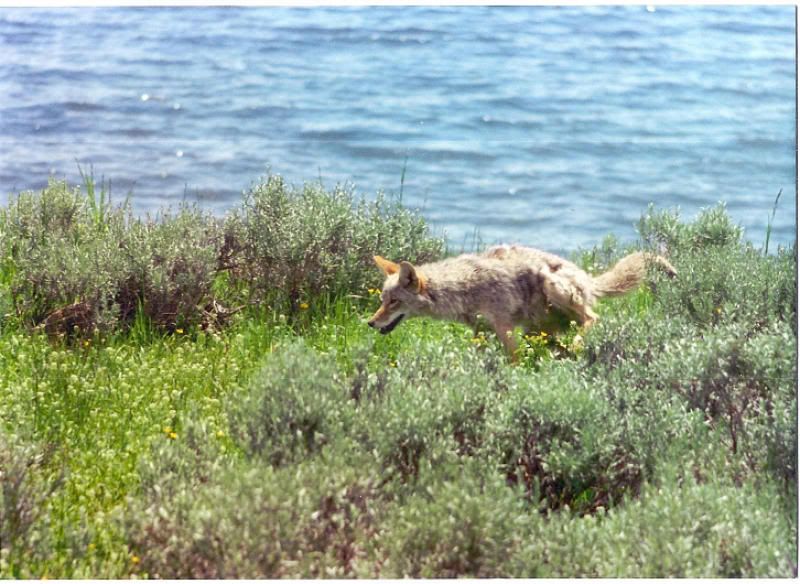Droughts and Harsh Winters, not the problem
Harsh winters and droughts have always impacted mule deer. As far as I’m concerned, they always will, especially if a harsh winter immediately follows a severe drought. We have always had weather and will continue to do so – with little or nothing we can do about it.
In the good old days, and I’m old enough to have seen them, mule deer rebounded very quickly after bad weather. Why? Well, they are nearly like rabbits, if they’re allowed to be. The old-timers, two generations before me, said mule deer used to be called “government mutton”, and were like herds of sheep. I was fortunate enough to see the tail-end of those days.
Nowadays, if game agencies see a 0.5/1.0 fawn to doe ratio – they brag about it. If you were a sheepman and had that kind of ratio – you’ld be outabusiness. Healthy herds of both deer and sheep should have 1.8/1.0 baby/mom ratios. Deer herds with those kind of ratios can, and do rebound quickly.
Why don’t we have those kind of ratios anymore? Primarily coyotes. Again, if sheepmen let the coyotes reduce their ratios to even 1.0/1.0 – they’re outabusiness.
 Coyotes are getting most of our fawns before they can even be counted. And, coyotes aren’t the only problem. In my home area, birds of prey (and coyotes, as well) kill fawns while they are being born. (You may also observe, that in the mule deer heyday – birds of prey weren’t protected, and were often shot on sight). Even crows will peck the eyes out of a mule deer fawn during birth, and finish up later. Another, but lesser problem affecting fawn/doe ratios, is females not getting bred or getting bred late. In Arizona, we have to kill 30,000 coyotes per year just to break even. Other states are not much different.
Coyotes are getting most of our fawns before they can even be counted. And, coyotes aren’t the only problem. In my home area, birds of prey (and coyotes, as well) kill fawns while they are being born. (You may also observe, that in the mule deer heyday – birds of prey weren’t protected, and were often shot on sight). Even crows will peck the eyes out of a mule deer fawn during birth, and finish up later. Another, but lesser problem affecting fawn/doe ratios, is females not getting bred or getting bred late. In Arizona, we have to kill 30,000 coyotes per year just to break even. Other states are not much different.
Yes, there are getting to be more and more people. Yes, there are fewer resources (mule deer) and, WE CAN DO SOMETHING ABOUT IT. In the late sixties, when I first started hunting mule deer, there were 210,000 hunters in my home state of Utah ( 1/3 of all Utahns, 2/3 of the Utah males) and we harvested app. 80,000 bucks per year for quite a few years. Now there are no more than 97,000 deer hunters in Utah, and they harvest less than 25,000 mule deer (male and female) (And that’s being generous -I don’t believe the DWR numbers). It doesn’t matter how many people there are per se, only how many hunters.
Now, I’m going to try and jump one step ahead of you – in case you want to tell me about human encroachment. The undeveloped areas next to cities haven’t been much good for mule deer for a long time. The last time mule deer hunting was really good along the Utah Wasatch front was 1969. We haven’t lost much to encroachment in that area for 40 years. Interestingly, mule deer along the Wasatch front are more abundant now than they were 30 years ago… it’s all those nice neighborhoods with watered shrubs and such.
All over the rest of Utah, and in large areas of other western states – things haven’t changed a lot. Blanding, Utah; or Rockland, Idaho; or Jackpot, Nevada; or North Kaibab, Arizona – for example. I can remember when cedar trees, all over the West, were eaten up as high as the mule deer could reach, and still we sustained large deer herds, and had large harvests year after year. The number of people ISN’T the problem, as politically popular as that idea is.
What is the problem? (and fortunately, it is one that we can do something about): PREDATORS. Every western state has maxed out its lion population. Lions will eat 50 deer a year, avg., if the deer are available. There doesn’t need to be a lot of discussion about that. Just pause and do some math using however many lions you think there are. Good weather won’t help reduce the lion impact, either.
I have a good friend who has the solution: Everyone who turns in 3 coyote ears or one lion ear gets a free deer tag from their state agency. Everyone wins! And, think of all the deer we “conserve”.
My father, who taught me to hunt, would not let me shoot a doe. He said that in 5 years I would have killed the equivalent of 25 deer by killing one doe. That is another problem we can do something about. We don’t need to kill does until we exceed carrying capacity. And, if you start talking to me about how killing does (politically correct) improves deer herds, be prepared for a rebuttal.
